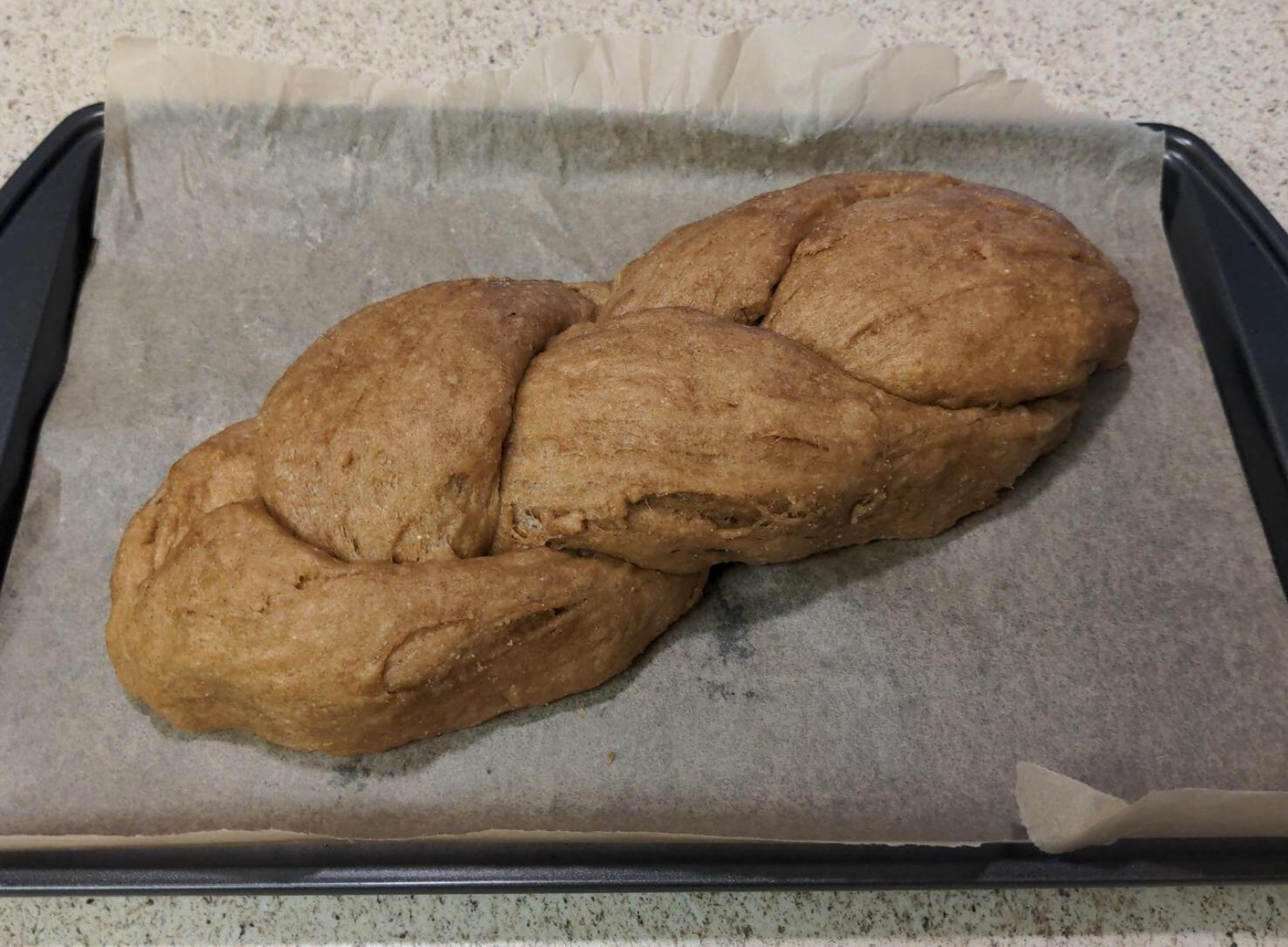Theory: Freshly milled whole wheat flour is easy to bake with
"Necessity is the mother of invention" - Anonymous"Stay Hungry, Stay Foolish" - CivilpediaUpdate: 1986 research paper shows that most of this is correct!! Seen on page 21 of this thesis: https://krex.k-state.edu/dspace/handle/2097/15076"Loaf volumes of whole wheat flour stored at +20˚C and -20˚C followed the same trends for 7 weeks of storage (Barnes and Lowy 1986). Loaf volume for the +20˚C stored flour decreased at a rate of 16.54 ml per week while the -20˚C whole wheat flour volumes decreased at 4.57 ml per week (Barnes and Lowy 1986)."----------------------------------------------According to conventional wisdom, "heavy" bran particles allegedly interfere with gluten development in whole wheat bread. The Smithsonian magazine published an article in support of this viewpoint (https://www.smithsonianmag.com/arts-culture/what-makes-whole-grain-bread-so-hard-to-bake-63878/), and Brod & Taylor, a kitchen appliances company, also claimed that "whole grains have a detrimental effect on a bread’s structure" (https://brodandtaylor.com/blogs/recipes/how-to-make-better-no-knead-bread).Looking back, there are some issues with this statement. The endosperm, which is the white flour part of the wheat berry, comprises 83% of the kernel (https://www.canr.msu.edu/news/wheat_germ)! There are many recipes that call for nuts and berries to be added to bread, and there are virtually no issues with gluten structure.Most people in modern times assume the wheat berries that flour is ground from are nonliving, since we are really disconnected from nature. Although these berries contain no water, they are lying dormant, but are still living. When these kernels are ground up, the relatively small amount of oil is exposed to the air. In the coming weeks, the oil oxidizes and decays, resulting in the bitter taste that prevents many from enjoying whole wheat bread (https://www.washingtonpost.com/archive/lifestyle/food/2004/03/31/when-good-oil-goes-bad/42c8f634-c585-4ab6-a417-12c34f344ea0/).There is surprisingly very little research on fresh vs months-old whole wheat flour, but one baker for King Arthur Flour made two 100% whole wheat loaves: one with fresh whole wheat flour and one with store-bought whole wheat flour. At the bottom of the article, one can clearly see that the fresh loaf rose much higher, and the author states that there is no bitter tang (https://www.kingarthurbaking.com/blog/2010/10/15/grind-your-own-whole-wheat-flour-%E2%80%93-how-sweet-is-that).It seems that the oil, as opposed to the bran particles, is the main reason why store-bought whole wheat flour does not rise as high. Oil is a bonding agent, and older, decaying oil probably blocks gluten bonds from forming. Putting this theory to the test should not be too difficult. Two companies that sell freshly-milled whole wheat goods are http://onemightymill.com and http://ancientgrains.com. I tried both of their products, and the taste was great with no drawbacks.One possible method would be to replicate a study published in 2013, "Influence of Endogenous Ferulic Acid in Whole Wheat Flour on Bread Crust Aroma" (https://www.npr.org/sections/thesalt/2013/01/11/169150598/in-the-battle-between-health-and-taste-why-white-bread-still-wins). The key difference would be to create a third loaf: One made from 100% freshly-milled whole wheat flour.


